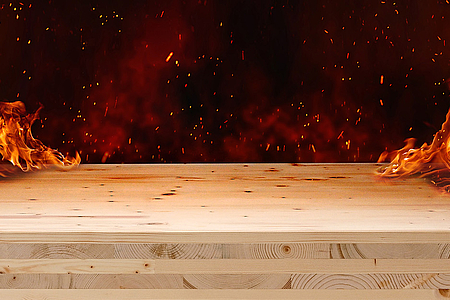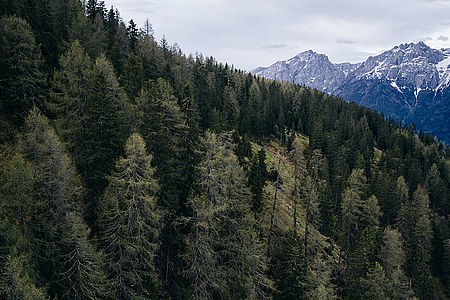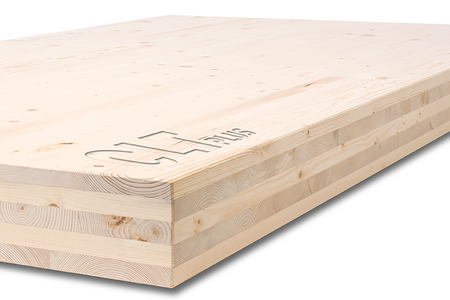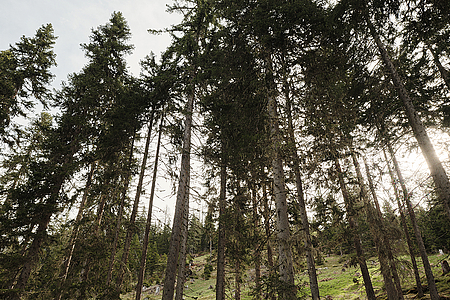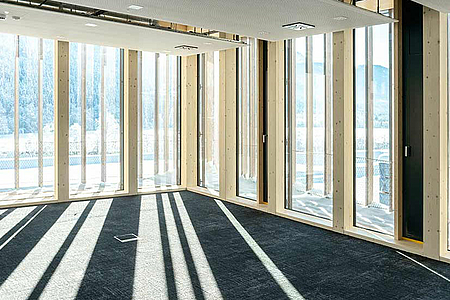Studying surrounded by wood: Timber for school buildings
How to build educational facilities using wood
To invest in education and in our offspring means to invest in our future: A contemporary, awareness-raising and motivating learning culture is also reflected in the quality of our educational buildings, which we understand as an expression of our appreciation of the young generations. The building material wood plays a crucial part in this, and for quite some time there has been a real boom in the number of day-care facilities, kindergartens and schools constructed out of wood. Why is this? 3 reasons for this sustainable solution that are strongly convincing:
1. Pure nature – healthy learning with wood
Not only us as adults, but also small children and young people are confronted with an enormous avalanche of visual and acoustic stimulations nowadays. Hence, permanent stress and concentration problems are pre-programmed. Whilst we are forced to accept certain developments as given, there are some that we can actively counteract. For example, in the field of architecture.
Staying in wooden buildings has a verifiably relaxing and decelerating effect, as evidenced by a scientific study of the children who had been taught in a “wooden classroom” in Styria (SOS – Schule ohne Stress [School without Stress]). No wonder: here, taking deep breaths is still a real pleasure. The scents of the larch, pine, fir and other trees linger in one’s nostrils long after having inhaled, and the connection with the forest remains within one’s reach when surfaces are left untreated. Wood has a completely calming effect, it smells nice, radiates peace and cosiness, and ensures all in all a pleasant climate in the room.
2. The Kindergarten of Wood – regionally rooted
If we wish not only to preach the concept of sustainability but also to consciously live accordingly, there is simply no way of getting around a way of thinking and acting that is inspired by our region. It is therefore not a matter of cutting oneself off from the world, but of appreciating and using those resources that are to be found right in front of our own doorsteps in a sensible manner.
This is wonderfully demonstrated using the example of wood: in East Tyrol in particular, at our disposal is a sufficient number of healthy, continuously regenerating forests and the relevant business operations that ennoble this raw material, according to time-honoured tradition in manual labour and with a great deal of know-how and passion. This, from an ecological point of view, saves a vast quantity of CO2-emissions thanks to extremely short transport routes, whilst from an economic one it strengthens the region and creates meaningful jobs. At THEURL, we too, are pleased when our offspring grow up surrounded by our products and maybe later on also themselves pursue a career in our company.
3. Schools of Wood: the Hard Facts
A trend to be clearly observed: a constantly increasing percentage of new buildings in the field of education and learning is today being realised as wood constructions, and wood is also more and more often to be found right at the top of the wish list when it is a matter of designing the façades. But the use of wood is also revealing itself to be extremely lucrative when renovating or extending existing buildings.
CLTPLUS in particular, thanks to its positive static qualities, the high level of pre-fabrication and the short construction period that goes hand in hand with that, is especially popular with architects and planners. Meanwhile the property developers are able to plan according to schedule and maintain a tight hold on costs. Building educational facilities of wood, therefore, comes with numerous advantages but, at the end of the day it is always the well-being of the children that is at the centre of attention, as well as the common task of creating learning environments where our offspring find ideal individual encouragement and challenges.
Best Practice – Showcase Projects for Educational Facilities made of Wood
The traditional teacher-centred method of teaching has long since passed, but most schools – particularly the existing ones – are often (still) not able to keep pace with the changing demands upon problem-solving and autonomous learning in small groups and different settings. While our offices, nursing facilities or workshops have undergone rapid transformations with regard to their equipment and range of offers, our children still learn in surroundings that have barely changed since the beginning of the early 20th Century.
But some buildings are showing the way: at the Kindernest Steinfeld, for example, the health of the little ones was given the highest priority, so that the day-care centre was constructed with a timber-frame and solid wood structure using CLTPLUS. As did XAL, the Graz-based manufacturer of luminaires and lighting systems, that opted for pre-fabricated modules for its company day-care facility. A particular plus: the modular building remains flexible after being finished, whilst expansions through further modules are possible at any time. And the Kindergarten in Gampern, when choosing its materials, also placed its trust in the high-performance natural products from THEURL.
Kindergarten, day-care facility, primary school: the new primary school in Saalbach-Hinterglemm is the best example of how bright, airy, open and inviting wood can be. A school that invites its pupils to touch, feel, and explore. That students and lecturers also like to surround themselves with wood and devote themselves to the topic is revealed by the research building Twin²Sim, an innovative test centre for sound and façades at the University of Salzburg. Here, intensive research is being done on the wood construction architecture of tomorrow, suitable for passive houses – a project that THEURL gladly and generously supports.










